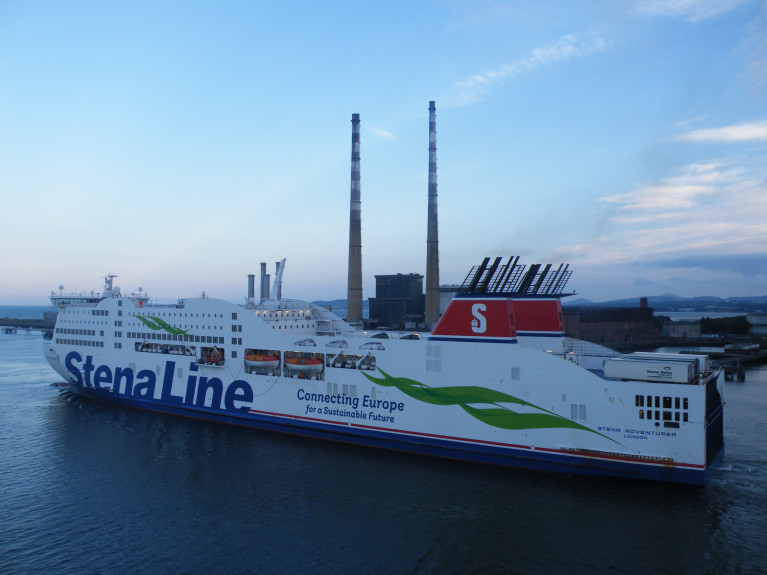The longest serving Dublin-Holyhead ferry operated by Stena Line departed the Irish capital this morning bound for Falmouth in the UK to undergo annual dry-docking, writes Jehan Ashmore.
Stena Adventurer built in South Korea was launched onto the Irish Sea central corridor route in 2003, is to dry-dock at A&P Falmouth, Cornwall and where a refit of some passenger facilities is also to take place. This is to update passenger facilities among them a 'Hygge' Lounge, a feature on board the new Stena Estrid, the operator's first E-Flexer ropax class built in China which last month entered service.
Taking over the sailing roster of Stena Adventurer is the Stena Estrid. As for newbuild's own roster this in turn is to be covered by Stena Superfast X, which transpires has made a return to its former Irish Sea route to maintain a two-ship service. This follows a stint on the Rosslare-Cherbourg route as Afloat previously reported.
Prior to the Superfast X return to the Ireland-Wales route, a repositioning passage saw the German built ferry depart the Wexford port and arrive at Anglesey yesterday. On Monday, the Ireland-France route's routine ropax ferry Stena Horizon returned from A&P Falmouth having completed a planned dry-docking.
Afloat yesterday evening tracked Stena Adventurer enter Dublin Port following a non commercial sailing from Holyhead, as the ferry did not berth at the ferryport Terminal 2 but instead headed upriver to Ocean Pier, Alexandra Basin East.
According to an Afloat source, Stena Adventurer berthed in the Basin for a Marine Survey Office (MSO) audit. At the same time this allowed relief ferry Stena Superfast X to berth at the nearby ferryport's No. 51 berth, before the 'Adventurer' departed for dry-docking.
The Stena Adventurer remained in Alexandra Basin overnight before departing this morning. The 210m long ferry is expected to arrive at Falmouth tomorrow morning and enter A&P Falmouth's Dry-Dock No.2.
































































